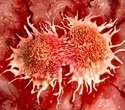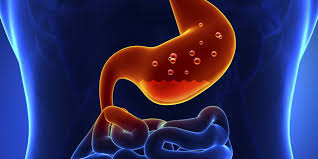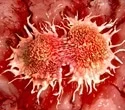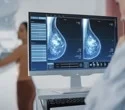New research shines light on position-specific hallmarks of cancer

A team led by the Cancer Immunogenomics group at the Josep Carreras Leukaemia Research Institute, the Computational Biology group at the Barcelona Supercomputing Center and the Germans Trias i Pujol Research Institute shows, for the first time, that within a tumor, the expression of the different hallmarks of cancer is not cell-specific, but rather position-specific. Under this new light, tumour architecture emerges as a valuable source of information to understand tumor dynamics and predict its sensitivity to anticancer drugs. "What is a tumor?" This is the fundamental question to answer if we want to treat cancer effectively. Our vision of cancer and tumors has been evolving with time, from the simplistic bunch of all-similar malignant cells to a more sophisticated, heterogeneous and hierarchical cellular structure, composed of many different cell types. Recently, a new paradigm has emerged: the hallmarks of cancer. The hallmarks of cancer are features that, when unlock...











